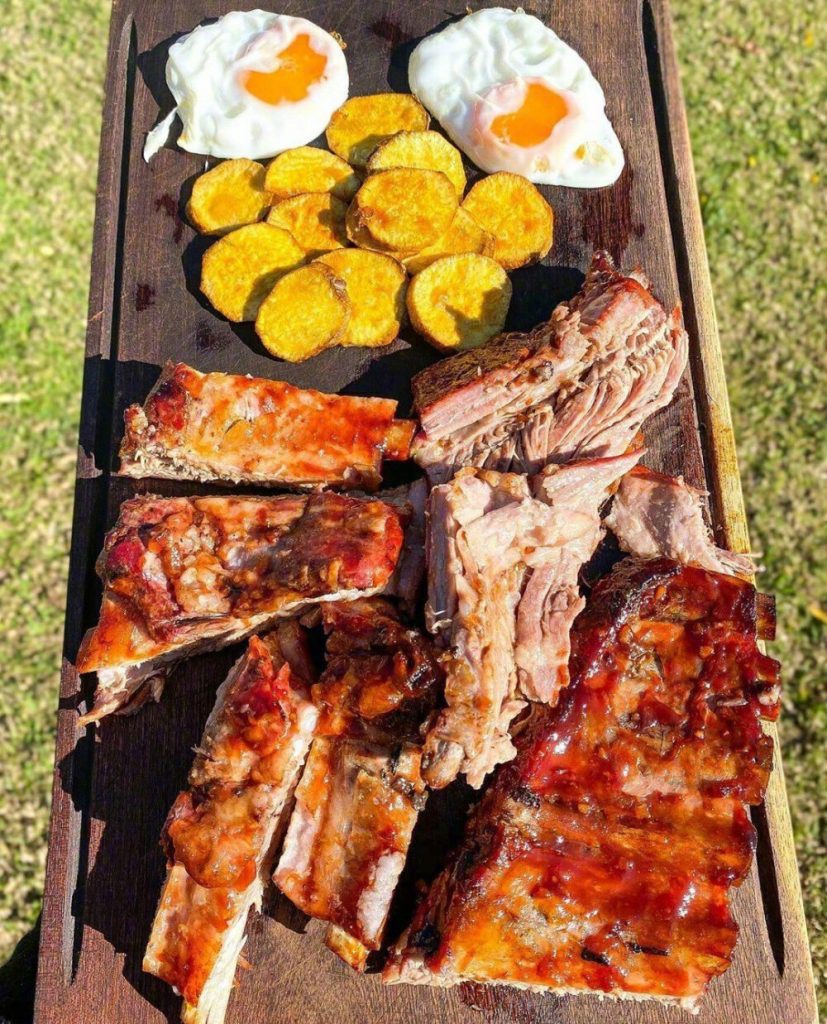
Eating outdoors and the risk of food poisoning
Eating outdoors is a great way to enjoy the Australian climate, but it can bring added risks:
- Bacteria grow more easily when food is stored in the temperature danger zone of between 5 °C and 60 °C.
- Facilities for cleaning and hand washing may be inadequate, and clean water is not always available.
- Food can be exposed to contamination from insects, pests, animals and dust.
High-risk foods
Food poisoning bacteria grow more easily on some foods than others. High-risk foods include:
- raw and cooked meat – such as chicken and minced meat, and foods containing these, such as casseroles, curries and lasagne
- dairy products – such as custard and dairy-based desserts like custard tarts and cheesecake
- eggs and egg products – such as quiche
- small goods – such as ham and salami
- seafood – such as seafood salad, patties, fish balls, stews containing seafood and fish stock
- cooked rice and pasta
- prepared salads – such as coleslaws, pasta salads and rice salads
- prepared fruit salads
- ready-to-eat foods – such as sandwiches, rolls, and pizza that contain any of the foods above.
Some people are more at risk of food poisoning
Some people are more at risk of getting food poisoning than others. Special care should be taken with their food. Vulnerable groups include:
- pregnant women
- the elderly
- young children
- people with a chronic disease.
Home barbeques and outdoor cooking
Some practical hints for keeping food safe to eat when you have a barbeque at home are:
- Keep the meat in the fridge until you are ready to start cooking it.
- Store raw meats and poultry separately from cooked items, and below other food so that raw juices do not contaminate other food.
- Cook food to at least 75 °C. Use a meat thermometer to check the final temperature. Using a thermometer is the best way to ensure that meats are properly cooked. If you don’t have one, you should cook poultry until the meat is white – there should be no pink flesh. Similarly, if there is no thermometer, cook hamburgers, mince, sausages and other meats right through until any juices run clear.
- Never buy cracked or dirty eggs and always thoroughly cook any food made from eggs.
- Use a clean plate for all cooked meats – don’t re-use the same plate or container that held raw meats. Don’t use the same equipment used to cook raw food (such as tongs or forks) to handle cooked food.
- Take salads, pates, dips and other perishables outside only when required, and return them to the fridge when that part of the meal is finished.
- Throw out any high-risk food left in the temperature danger zone for more than 4 hours. Don’t put it in the fridge and don’t leave it for later.
- Cover food and keep birds, insects and animals away from it.
Preparing food for outdoors
When planning a picnic, making packed lunches or preparing for any other occasion where you are eating away from home, be aware of the basic food safety rule – keep hot foods hot and cold foods cold.
You should also:
- Store any raw meat in an insulated cooler kept cold with ice or ice packs, away from other food.
- Cut and prepare all meats and salads beforehand to reduce the need to handle foods when you are outdoors.
- Place raw meat or other high-risk foods into separate leak-proof containers and then into a cooler kept cold with ice or ice packs.
- Make sure all cooked foods are completely cooled before you pack them in the cooler.
- Use plenty of ice or cold packs around the food. Frozen drinks can serve as ice packs, especially in packed school lunches.
- Travel with the cooler on the floor of the car, out of sunlight. Cover the cooler with a blanket for extra insulation.
Camping food safety tips
Perishable foods are generally unsuitable for camping unless you have access to a fridge. It is best to take dry, UHT and canned products. Other tips for camping include:
- If you want to take some meat with you, frozen meats can be stored in a cooler with ice bricks for up to 2 days and pre-cooked meals, such as frozen stews, for up to one day.
- Cover the cooler with a wet bag to promote evaporative cooling.
- Divide the food into meal-size portions and pack it according to when you plan to eat it so that you can get what you need quickly.
- Make sure you cook or heat all food well, to at least 75 °C.
- Boil drinking water before use or use disinfecting tablets.
General cleanliness tips
Cleanliness is always important, but it’s especially important when you’re preparing food outside the home. Remember to:
- Wash your hands before and after handling raw foods. Wash your hands with clean water and soap, and dry them with clean towels or disposable towels.
- Consider using disposable wipes or a hand sanitiser if there is no safe water. Hand sanitiser won’t kill all bacteria that cause food poisoning. Good handwashing is preferable to sanitiser.
- Keep the outdoor area or campsite as clean as possible.
- Keep food sealed and covered – birds, insects and animals can be a source of food poisoning bacteria.



